
Ikki is a WhatsApp chatbot that teaches computational thinking to students from grades 7 to 10. It is one of the touch-points offered by Quest Alliance’s program, in partnership with Amazon Future Engineer, to introduce children to 21st Century Skills. It was to be deployed in government schools in Odisha. The chatbot is powered by Glific, a platform that enables Non-Profit Organisations to design conversation flows on WhatsApp and deliver message sequences to their stakeholders.
Ooloi Labs had been brought on board by Quest Alliance to design this chatbot and its content. Saurav and i (back when i was still working at Ooloi Labs) had been assigned to this project, considering Saurav’s inclination towards game design, and mine towards narrativising content and contextualisation. We used Glific’s framework to create an immersive gamified experience— The chatbot, Ikki, guides the learners through several conversation based activities which encourage the learners to solve problems by applying the basics of computational thinking.
Here is a quick Demo of what interacting with Ikki looks like:
We conducted the research for the chatbot in the Nuapada district of Odisha over 3 rainy days in August. The main objective behind this exercise was to understand the learners, their context and their familiarity with coding and the themes that the chatbot intended to work with. I conducted a contextual study with around 40 children across 4 different schools, using speculative prompts and drawing.
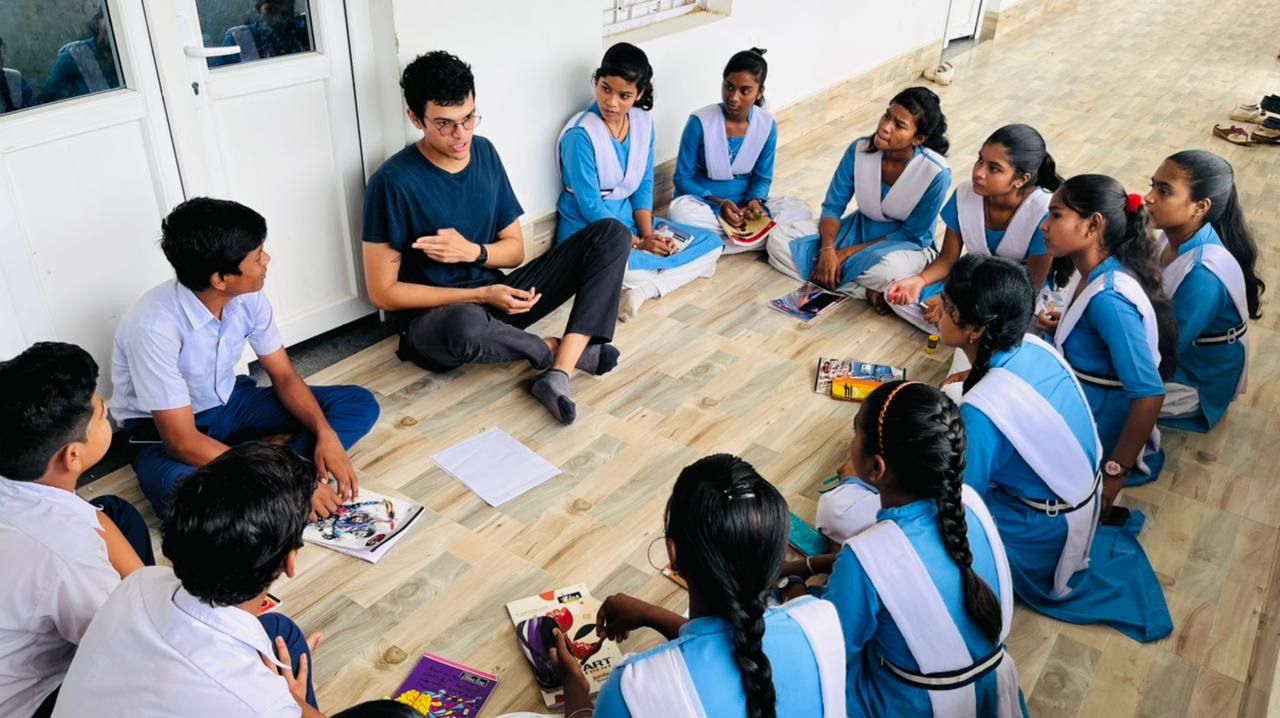
I find drawing to be a rather effective method of conducting contextual studies, especially when working with children. The drawings that emerge hold a lot of information themselves, usually revealing everyday themes, approaches and attitudes as well as a glimpse into their aspirations. These drawings also offer the possibility for me as the researcher to hold discussions with the students while grounding the conversation in just how things were represented, and what they were trying to portray.

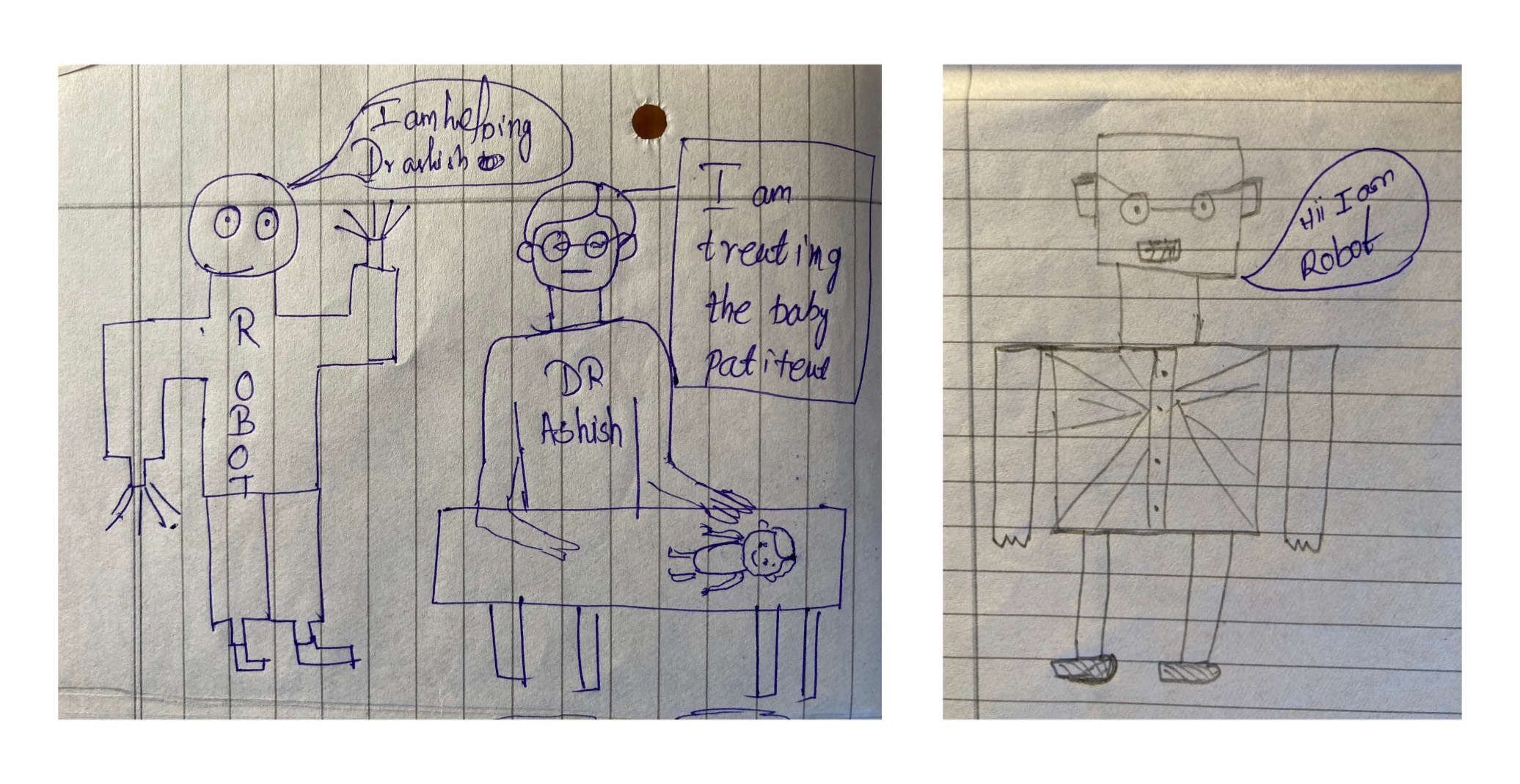
But what is more relevant to this activity is the process itself. Since i am seen by the students as a stranger who has walked into their environment for a day, asking questions and expecting answers, they are either extremely guarded or are trying to give the ‘right answer’. Drawing together eases that tension, and I find that i am able to understand so much more about them in the chatter that follows after an activity. While they are drawing, the questions they ask, the things they draw first, the figures they spend more time on detailing, the places where they hesitate or feel stuck, all of these are extremely relevant data points that help give one an idea about the space and the context that the students are embedded in.
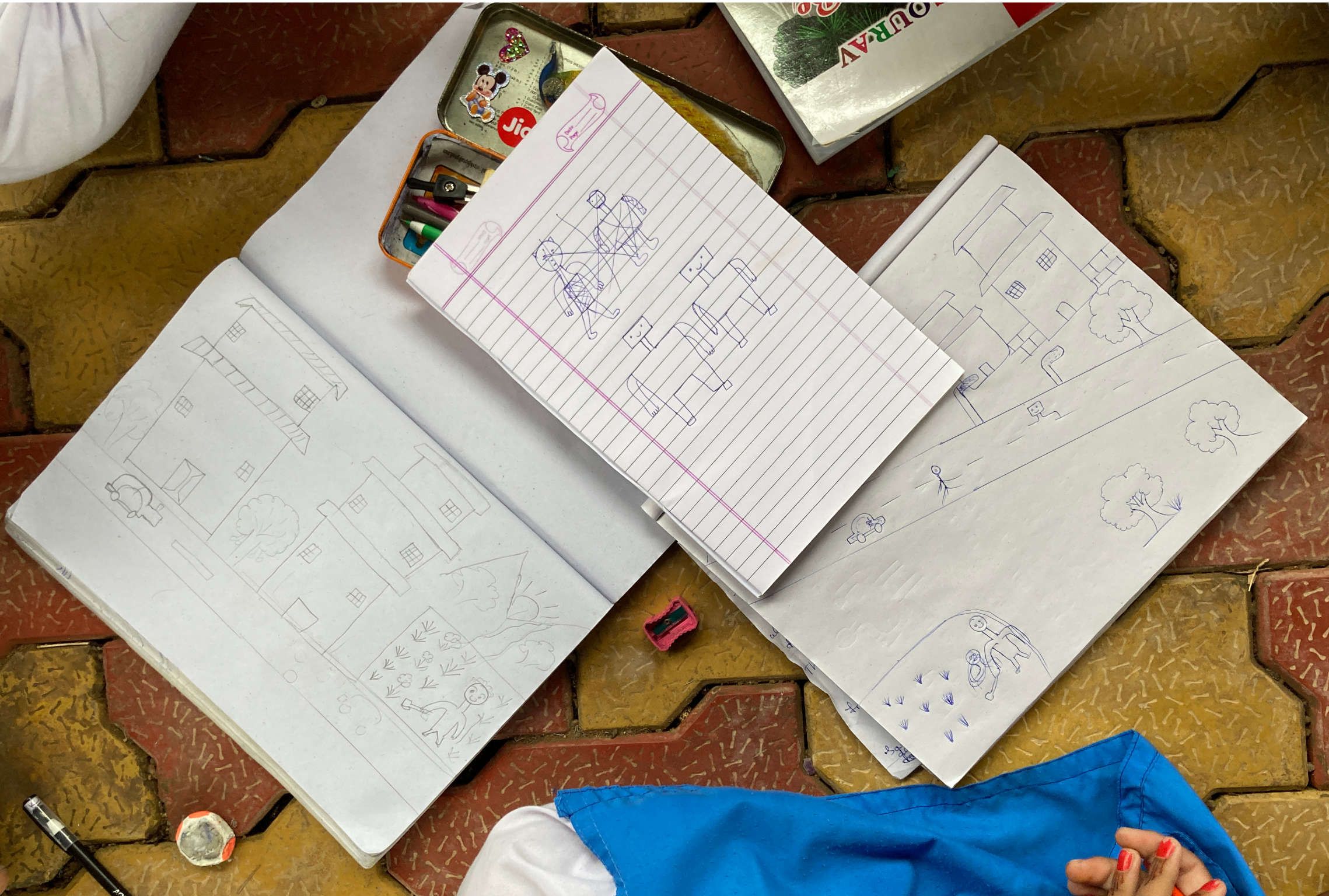
As part of the research we also introduced the children to a test chatbot to observe how they interact with it. This provided several insights that helped us build out the chatbot and it’s interface, as well as strategise it’s implementation.
The design of the chatbot emerged from the inferences and findings of the research exercise. We were keen that the chatbot should have a narrative voice that the children find gentle, friendly and encouraging. That’s how we designed Ikki, the main character of the chatbot interaction who introduces the learners to different characters and assists them in learning how to interact with them. We visualised Ikki to be a friendly robot who would motivate the learners and hand-hold them through challenging activities.

All the activities in the chatbot are based in a village called Unnatpuri, where humans and robots live together. We visualised it in such a manner that it doesn’t look all that different from the student’s immediate surroundings, except for the addition of robots who help people with their everyday tasks.

The premise of the narrative is that if coding is the language by which people can talk to computers, and a robot is also a type of a computer, then the learner will understand computational thinking and code by interacting with various robots that progressively require more complex instructions.
The premise required us to have a language that enabled the learners to interact with the robots in the narrative. We created a rudimentary syntax which was simple enough to grasp and made use of some basic principles of code to enable it to run correctly. This syntax enabled us to introduce command sequences, functions, basic boolean logic and conditional statements.
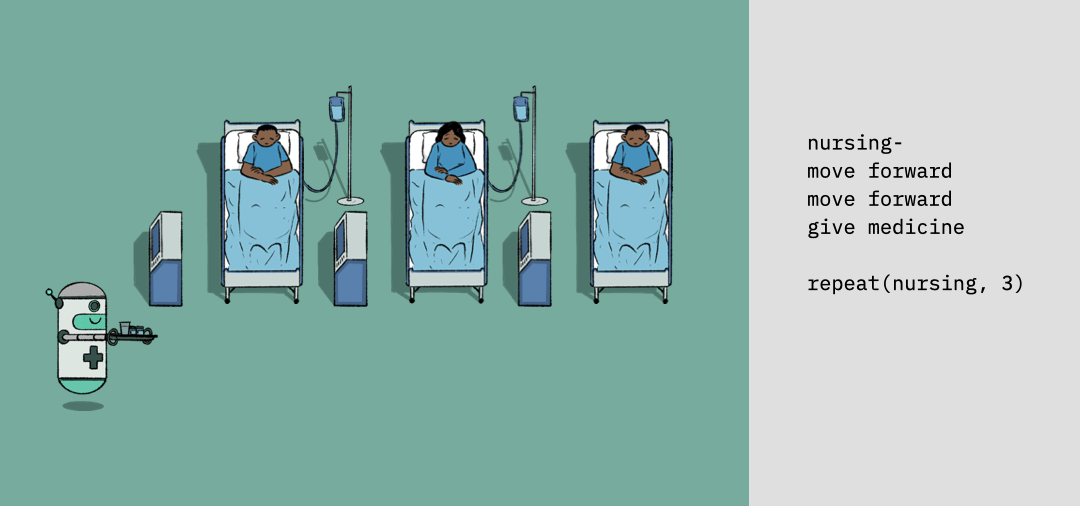
We had to work within the constraints of the WhatsApp Business API and design our activities around the interactions that it provided. So our activities were woven into the conversation itself, and we introduced concepts to the learners through multiple option messages, menus, input based responses, with the feedback being provided in the form of stickers and images.
Each week got progressively more complex, even for us as the content designers. Which is why relying on metaphors through the activities was crucial, as it gave a very direct point of application for the learners instead of just teaching them the concepts. For example, to explain boolean logic and operators, we established the activity at the bus station. Parchi, the robot responsible for checking tickets, was supposed to be trained to only allow people with the right tickets into the bus.
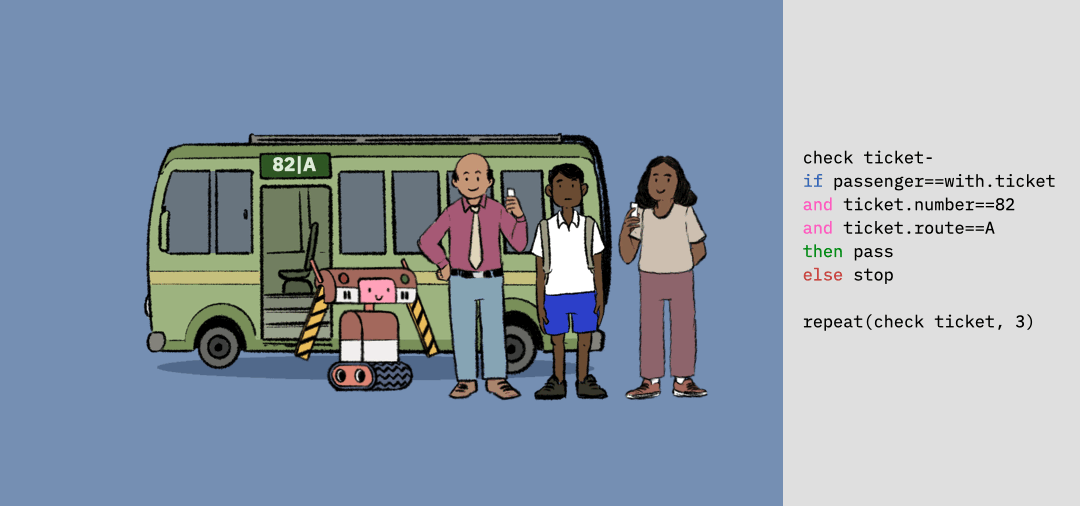
The design of this chatbot was such a fantastic journey for both, Saurav and me. All our projects prior to this were designed for far more generalised audiences— across multiple states, urban-rural settings, languages, social and economic privilege, accessibility. This project, in contrast, forced us to work with specifics, and it proved to be more difficult since there was lesser room for assumptions. Working on this chatbot really pushed us to refine our approach and methodology.
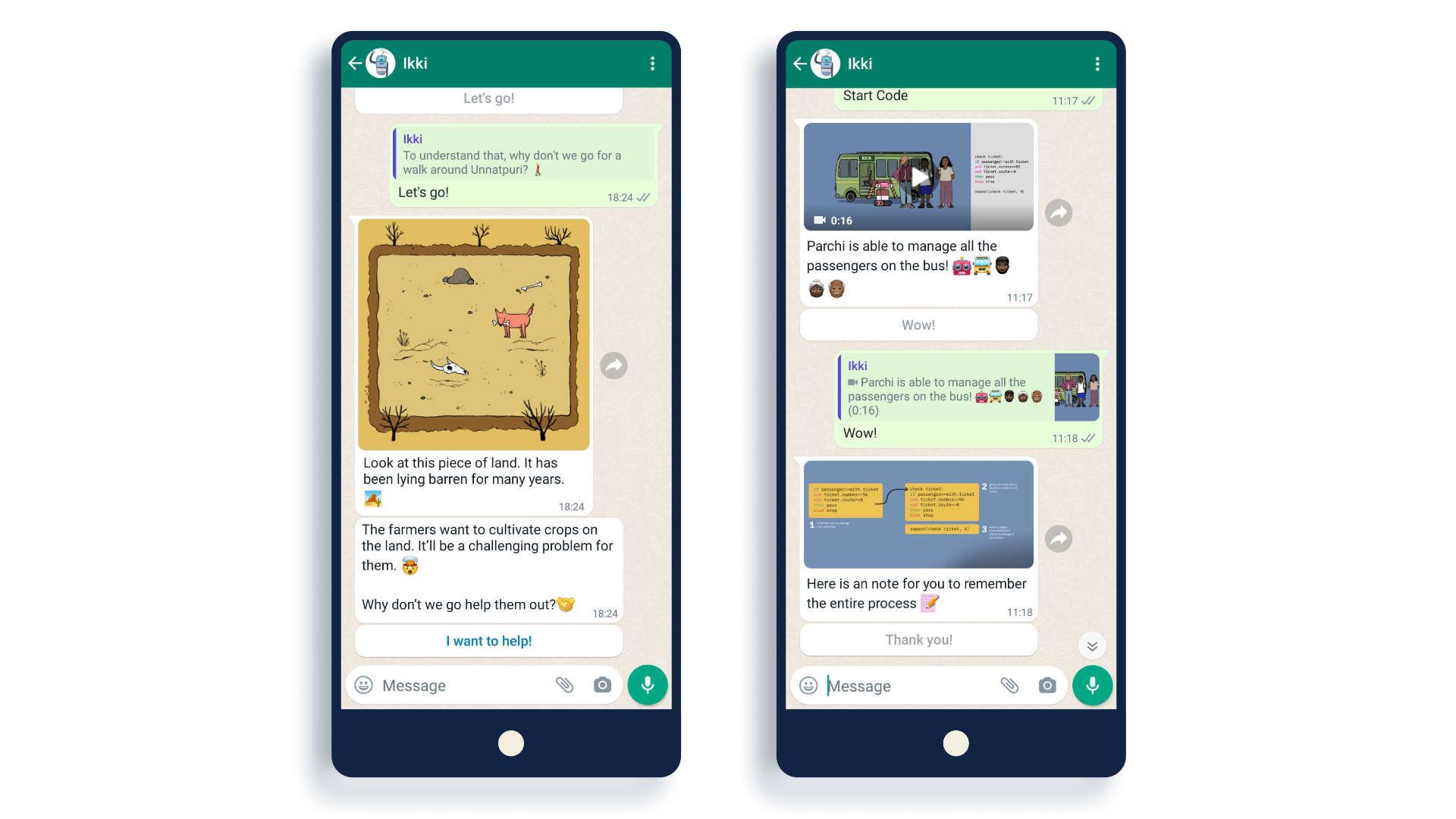
The chatbot has been deployed in Orissa and Gujarat, along with a pilot that is being conducted in Telangana. The Quest Alliance team is currently gathering data and reviewing it to strategise the next phase of the project, understand where the chatbot is falling short and find new approaches to involve additional stakeholders like parents and teachers.
I’m in the process of writing a detailed documentation, which will be available soon! :)